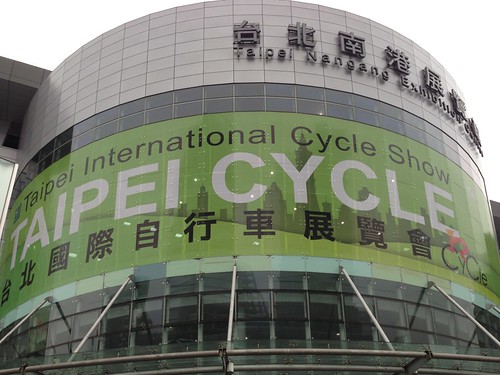
I was recently in Taipei doing my best to take in the entirety of the Taipei Cycle exhibition. The sheer magnitude of hardware on display is a bit overwhelming and there is precious little time to see or meet with everyone on the show floor.
In my capacity as editor of TiC, I swept through the event looking for a peek into the future and for an opportunity to speak with exhibitors regarding their own impressions of their products, the industry, and Taipei Cycle, in a search for any trail of breadcrumbs that might lead me to some sort of narrative.
For many companies Taipei Cycle is an automatic calendar date in the yearly trade show cycle that requires compulsory attendance simply because it is on the calendar. They go through the motions and begin packing up around noon on Saturday, several hours before the show closes. Other companies work the floor until the power is pulled at 3:00pm.

Refined Carbon
Many of the exhibitors I spoke with felt the show was about going through the motions without much to buzz about. There were a few experimental designs and unorthodox ideas, but many of the deals had either already been cut or were set to be finalized in Taichung. Taipei is merely a formality before the real business is waged around Taichung's cycling industrial centers in and around Taichung. A few industry types I talked to felt Taipei Cycle was more of a hassle being so far removed from the fabrication and finishing locations where designs can become reality and brands can lock down their product lines.
Are Taichung Bike Week and Taipei Cycle redundant? There have been some plans to move Taipei Cycle to July, but this may be less favorable to the European companies who seem to enjoy coming to Taiwan for a respite in the weather. A move would also place the event at the beginning of the development cycle ahead of Taichung Bike Week, where the earliest models and innovations from OEM/ODMs are being pitched and picked up for branding/rebranding.

Keith Bikes in Hualien
The Carbon Revolution Continues:
One thing that was on full display was the far reaching touch of the "Carbon Revolution" in the shape and form of countless composite products freshly branded or, in many cases, still sporting the your-name-here logo of the OEM.
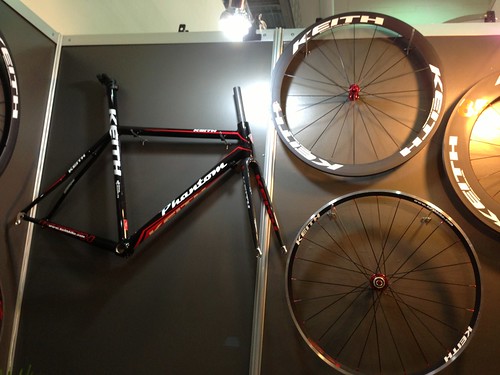
Keith's Expanded Inventory
I'll call it a revolution in that composite technology has matriculated throughout the industry allowing prices to drop while retaining a higher profit margin. This has allowed more OEMs to provide more frames and components to a greater number of buyers with lower yields to become profitable.
In a sense there is something strangely proletarian about the present and future of composite technology, which is often still regarded with the reverence of the elite. Has carbon become the new aluminum?
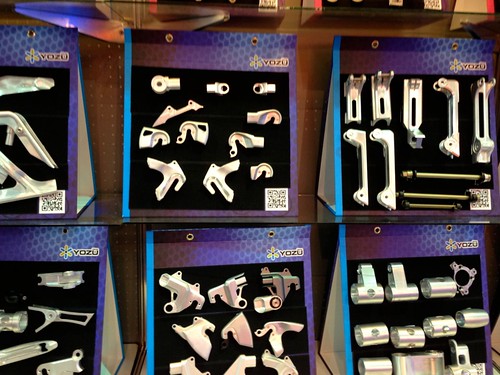
Alloy
One look on the 5th floor's display of the spinelessly political "Cross-Strait Exhibitors" section of Chinese OEMs made it clearly evident that any gimmicky mold can be locked down and patents issued if the price is right.
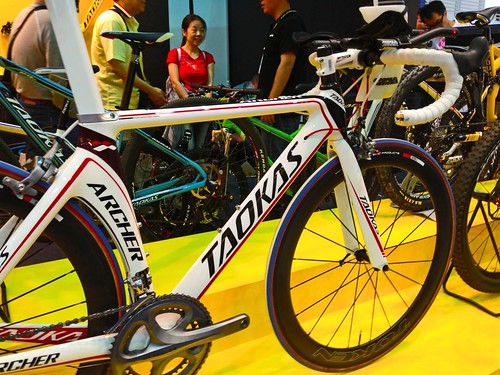
Taokas
The sheer number of OEMs looking for interested brands has increased competitiveness and allowed several small brands to incorporate composites into their product line.
Many companies assist in making minor changes to a general product to increase the possibility of receiving the necessary patents to sell internationally.
It can often seem that there are about three designers of OEM composite frames, numerous instances of mixed and matched tube shaping, and several more imitators.
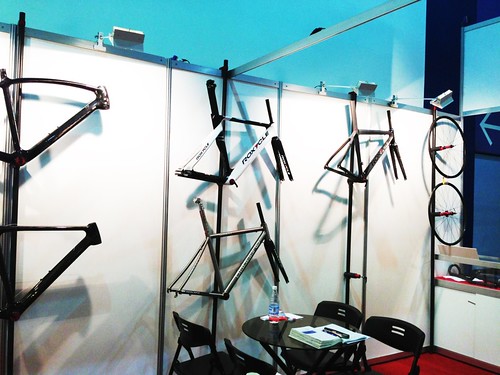
It is becoming easier and easier for small brands to gain access to an assortment of OEM frames and components allowing these small brands to seemingly spring up from nowhere with multiple models and branded components that would have taken massive capital investment and teams of experts several years of working in-house to produce a brand from the bottom up.

The rise of the "Carbon Revolution" really gets to the heart of the brand and branding.
With so many composite OEM products out there, there is an overwhelming feeling of "meh" that was palpable at Taipei Cycle. The differences between products can seem slightly cosmetic at best.
The brands step in and supply the image, the story, the warranty, and do the work of seeking out dealers and distributors.
Some brands have even sprung from already established sporting goods companies that decided to use the OEM as a means to diversify a product line.
It is taking far less capital (if any) in R&D or production to launch a line of hubs, wheels, stems, frames, bars or anything else. The capital is spent on sourcing, branding and marketing. With the right coat of paint, a catchy name, and a ton of advertising money, your small operation could produce the next "super bike"in the pro peloton (don't think this hasn't already happened). The claims of ultimate stiffness and superior design elements I take with a grain of salt.
The idea of the proletarian nature of a carbon future both bothers me, and strangely intrigues me. I really have nothing against carbon, only against the marketing claims and stunts that really have more to do with selling pseudoscience and precious little to do with actual cycling.
I remember back when marketing departments were convincing consumers that our lives would be fundamentally changed if we got our toothpaste from a pump. And it worked for a little while... but now we're still using the old fashioned tube. I often feel that way about the marketing that goes into bicycles.

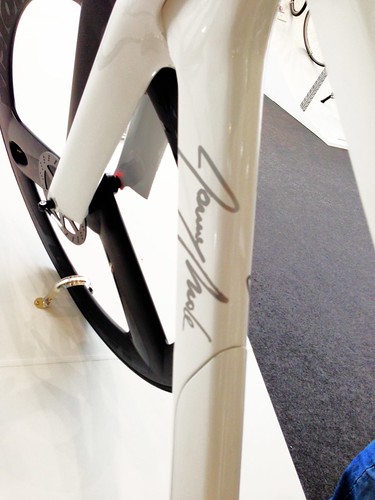
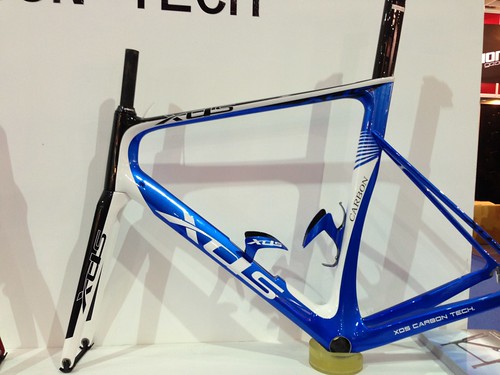

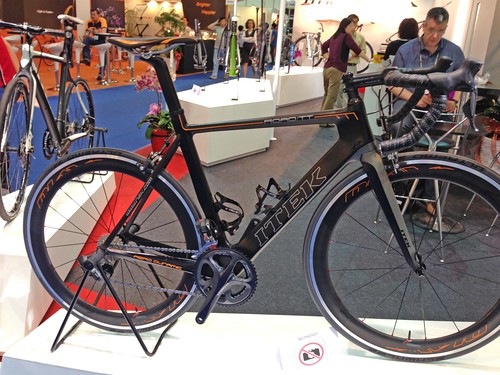
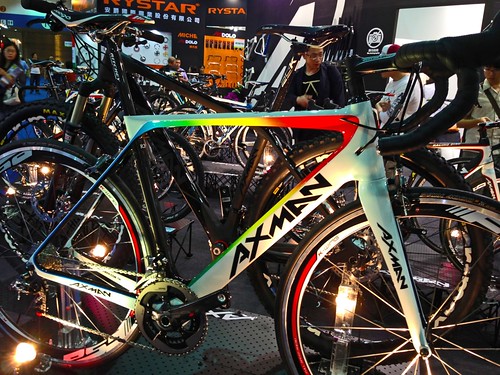
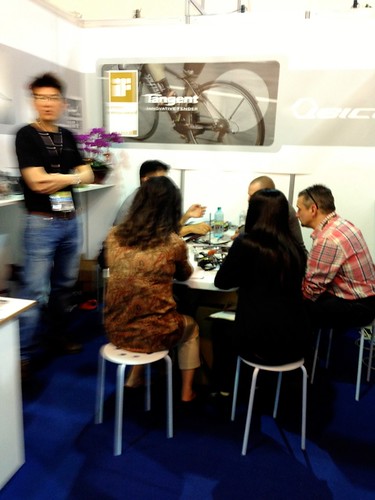
Meetings
The importance of Taipei Cycle may be even more important for the small manufacturers which primarily focus on the peripheral components with unit prices calculated in cents on the dollar.
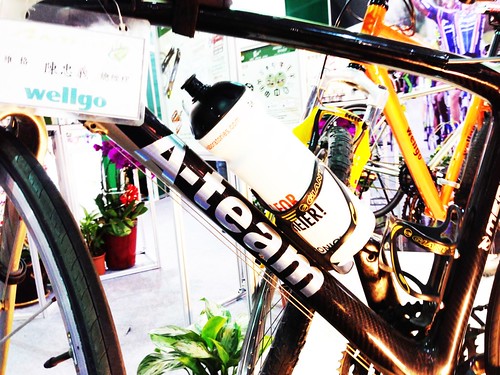
These are the little single purpose bits that often fly well under the radar of anyone not directly involved in their acquisition or sale. These are the cable stops, spacers, bearings, lubricants, industrial decals like those of TransArt below. The little parts that go into making a complete working bicycle.
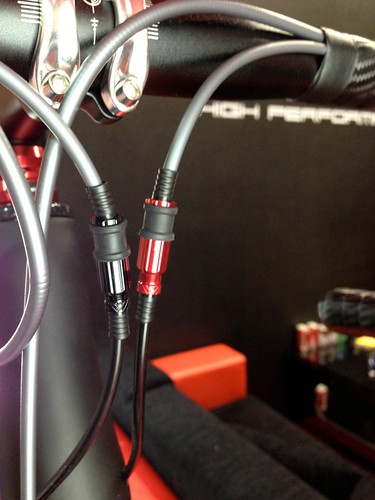

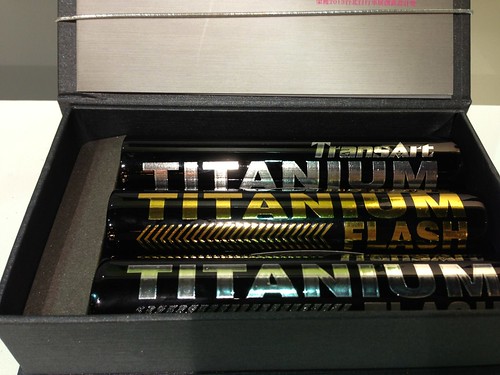


Mac Mahone hand welded frames
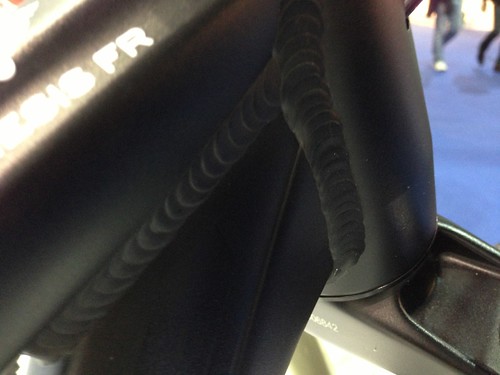

One thing that I did notice is the activity in the small patches of sunlight beneath the shadows of giants.
There are several smaller companies looking for break through innovation, steady marketing, partnerships, and exploiting a niche.
Over the course of several years I have watched Taiwanese cycling culture evolve from heavy duty mountain bikes for road riding, to an assortment of road bikes and hybrids supplied by Giant with a dash of hometown pride.
Now Taiwanese cyclists are increasingly looking beyond the ubiquity of Giant and Merida, in search of something more unique or with a little more cachet. It is becoming more and common to spot riders sporting the more famous foreign brands such as Colnago, Pinarello, Willier, Canyon, Cervelo and Specialized... despite the fact that many of those frames are made in Taiwan.
Increasingly, other riders are looking beyond the big-name imports from the peloton and more into smaller brands or custom and craft bikes.

Culprit Legend
I caught up with Josh Colp of Culprit Bicycles as he introduced several unique prototypes and finished models with some radical design concepts. As a triathlete, Josh is very keen to integrate the latest bicycle technology into his frames.
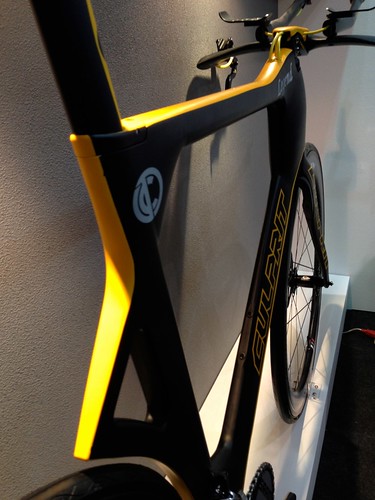
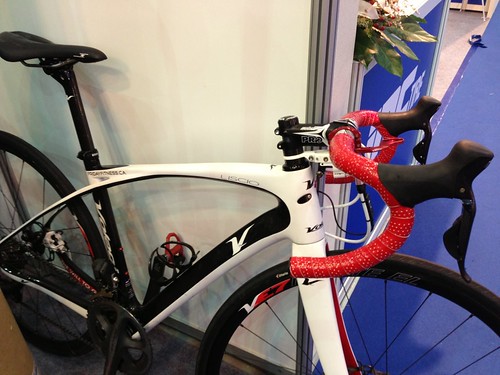
Volagi: A different philosophy than simply worshipping stiffness.
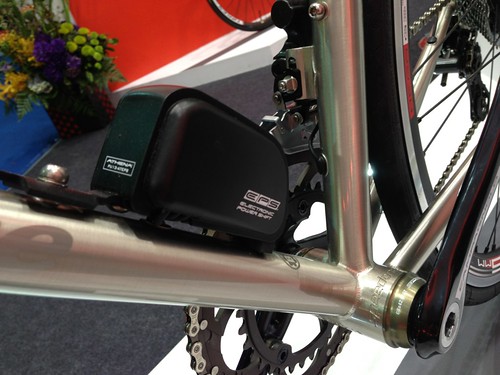
Speedone RT30
If last year was about the disc brake, this year was more about electronic shifting and how it can be incorporated into a variety of frames. Speedone is now offering factory mounts for Di2 and EPS battery packs on its clear coated steel frames.
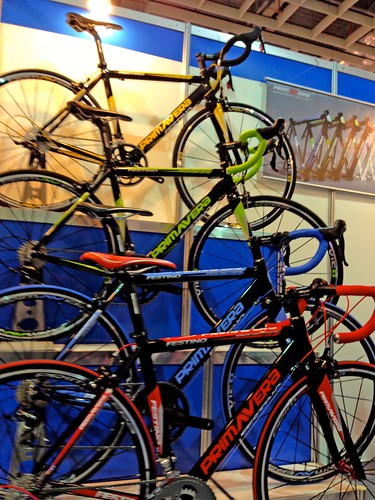
Primavera Festino
I was very pleased to meet up with Sabinna and Glenn from Primavera Cycles. If you live in Taiwan you may have seen a Primavera or two on the roads or at local events.
Primavera is a small Taiwanese brand that has taken a much slower and more methodical approach to the market by intensely focusing on the in-house design and partnerships on a limited number of frames with specific components. Designed from the bottom up, Primavera provides a more focused approach allowing the company to concentrate on the values and goals of the company and the customer. Primavera remains a great option for someone looking for a high-end bike from Taiwan that does not have to be a Giant or a nameless OEM.
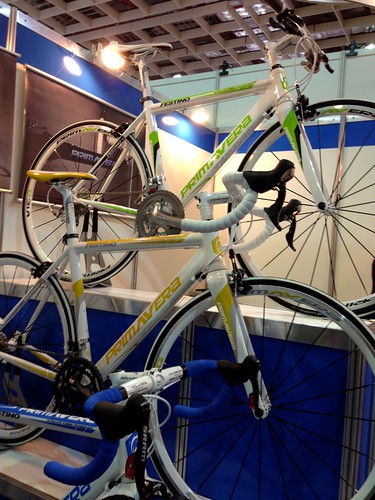
Rikulau is Taiwan's custom titanium and steel frame company. Rikulau provides full customization of geometry and tubing as well as custom paint schemes. Rikulau works in close partnership with the highly renowned ORA fabrications in a similar way to how Tom Kellogg has partnered with Seven.
These are beautiful custom bikes that are proudly Made in Taiwan. They aren't inexpensive, but they are more reasonably priced than other factory brands--An exvellent value!
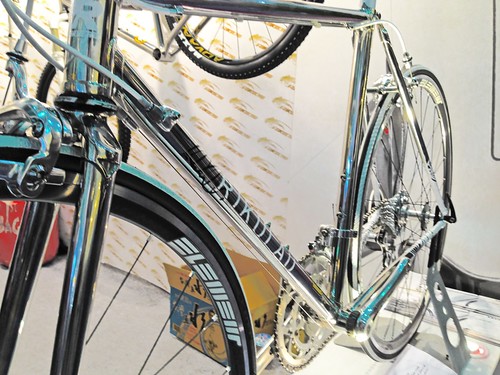
Riku-wow!
Of course Shenyang had the new fully custom Seven 622 on display and the French company, Cyfac, had a very sweet looking custom carbon rig on the floor. I really feel more Taiwanese riders will be gravitating toward these high-end customs in the near future. In Taiwan, I have seen a handful of custom bikes from Seven, Independent Fabrications, Moots, Parlee, Firefly, Serotta, Guru, Waterford and a few others.
Cyfac, has rejected the carbon OEM model in favor of offering fully customized carbon geometry and tubing. These bikes really intrigue me and leave me curious. They avoid the pitfalls of riding a bike that is overbuilt for a rider 80kg heavier than myself.
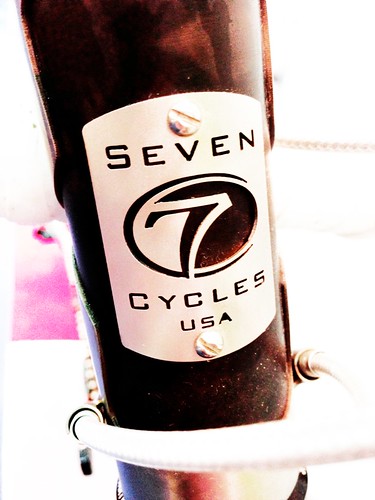
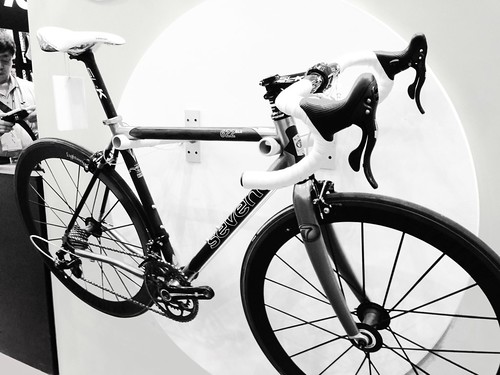
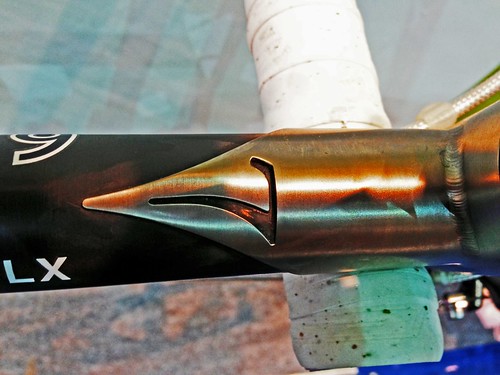
Seven 622
On another front, I was happy to see another strong showing from Tern bicycles. Tern arrived for their inaugural Taipei Cycle last year and I was duly impressed with their line of bicycles as well as with Biologic, which is a sister company that supplies a wide variety of cycling gear that works with, and independently from, the Tern brand.
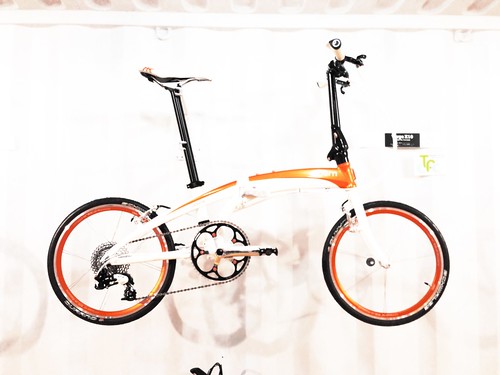
Tern
The message Tern really wanted to promote was that these bikes are designed to be bicycles (first and foremost) that happen to easily fold into a compact module for packing and storing. As their marketing rep pointed out to me, the folding part is incidental to the function as a bicycle. We tend to become fixated on the "folding bike" label and it tends to drive focus away from the overall function as a bicycle or even as a vehicle. The term "folding bike" has become too defined by one function, more often than not, tied to the limitations associated with that function.
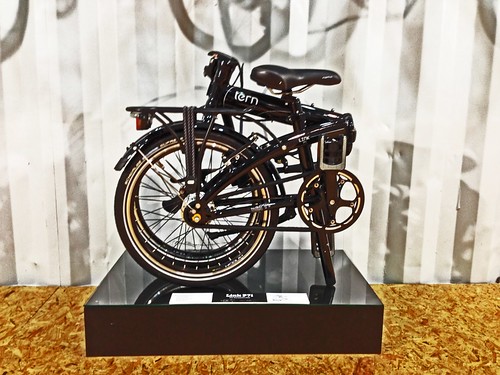
I really have to admit that Tern has done a marvelous job in the details of moving their products away from the stigma of "folding bikes" and more into the realm of multifunctional bikes that could very easily eat into the hybrid or townie markets. I have even heard of some Terns being used for light touring.
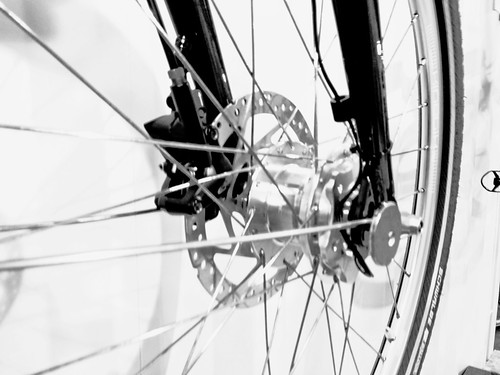
Biologic had a variety of bags, tools, racks, phone mounts and even a collapsable helmet.
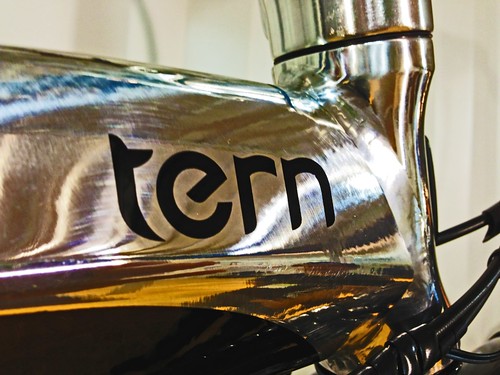




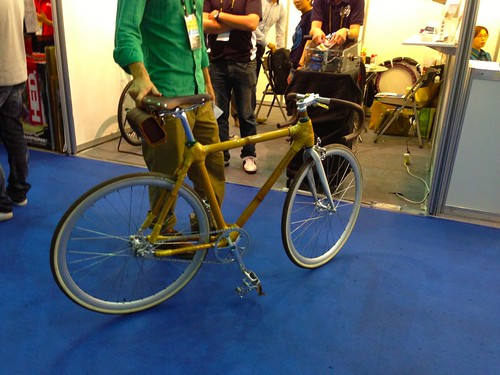
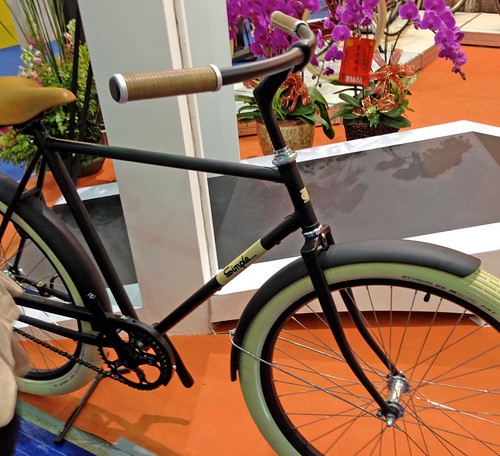
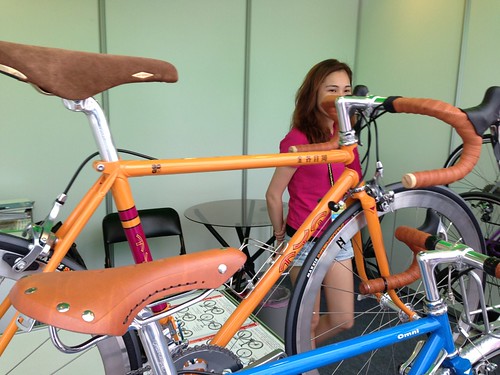
TYA
I was also happy to pay a visit to TYA/TYALU bikes. They are currently working on a 5th generation of bikes speced for 650b/c wheels. These are excellent and attractive steel bikes that may appeal to riders with smaller frames. They retain a very classic look that is all too hard to find in this era of carbon gimmicks. There are rumors of 700c steel touring bikes and road bikes in the works.

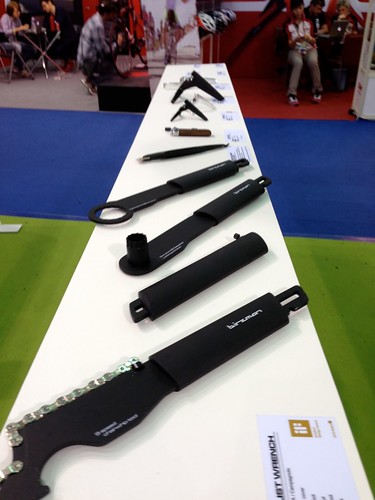
Birzman was back to showcase some tools and accessories that were quite innovative. There was an amazing little frame pump that collapsed into near nothingness.

Retul Tech: Winston Tam
Another exhibitor that I hope we can see more of in Taiwan is Winston Tam from Retul. Retul provides riders with a video and computer assisted fitting rig designed to dial in a fit to accomplish a desired goal; be it comfort, power or simply to allow a rider to find a position that will save their joints from undue stress.
Fit is too often the first and most important component that is sacrificed at the point of sale. I have seen far too many riders leave a shop with a bike that is obviously incorrectly fit and therefore may actually impede their original goals.
The future of cycling is upon us.

